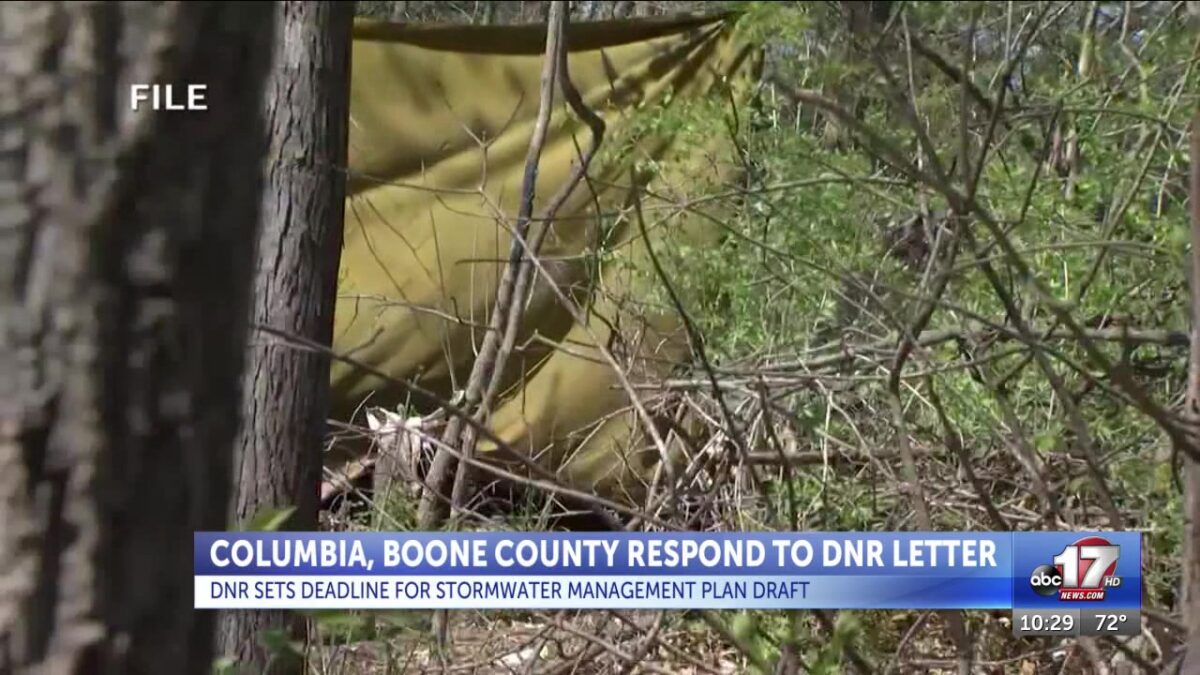Columbia, Boone County to take closer look at stormwater management plan after DNR sets November deadline

Nia Hinson
COLUMBIA, Mo. (KMIZ)
The City of Columbia is planning to take a second look at its stormwater management plan’s language.
It comes after the Department of Natural Resources set a Nov. 15 deadline for the city to submit new draft ordinance language.
DNR sent a letter to Mayor Barbara Buffaloe and Boone County Commissioner Kip Kendrick last week, threatening penalties for failing to properly address waste from homeless encampments entering public waters. The department claims the city and county’s current stormwater and stream ordinances submitted in August are too broad.
The letter also claims the ordinances fail to address the prohibition of non-stormwater discharges from encampment activities and don’t set appropriate protections around streams within the city and county.
City of Columbia Utilities Director Erin Keys said within the next month, the city plans to look at ways to be more specific in its ordinance that would address the riparian areas. Currently, Keys said the city’s ordinance includes language related to any solid waste, trash or debris that becomes, or could become deposited in or impact waterways.
“But if we need to include riparian areas in that, I know that the city manager staff is currently looking at some urban camping restrictions, prohibitions, activities and how that plays out in public areas including parks and rights of way,” Keys said.
Kendrick told ABC 17 News via email on Monday evening that he spoke to DNR Director Kurt Schaefer Friday afternoon about the issue.
“I feel confident that we have identified a path forward to address DNR’s requests at the County level,” Kendrick said.
Keys said the city will submit a draft to the DNR and receive feedback from the public and City Council to determine whether or not the draft will be final, or if edits are needed.
The DNR claims Hinkson Creek, Grindstone Creek and Hominy Branch contain E. coli from human waste from homeless encampments near the streams. It claims this poses significant risks to Columbia’s water quality and public health.
Keys said all three of those creeks have been added to the 303D list, which identifies water that has impairments. She also said the city has taken active steps toward cleaning up homeless encampments as soon as they are made aware of them and believes the current ordinance allows the city to enforce and ensure public waters are safe and protected.
Keys said the city has also recently had a request for a proposal for vendors that would help with the clean-up process.
Columbia, Boone County and the University of Missouri outlined a coordinated plan in August to address illegal encampments and prevent waste from entering local waterways. The plan emphasizes compliance with city and county stormwater regulations, the Missouri Clean Water Law and federal pollution laws, while tracking complaints and cleanup efforts.
The three are currently trying to renew a joint-operating permit aimed at preventing contaminants, such as sewage and chemicals, from polluting local water sources.
DNR’s letter also claims it provided examples of stream protection measures used in San Jose, California, and Bozeman, Montana, as examples but never received a response. Keys said the city has looked at the examples and tried to determine how they’re relevant to Columbia.
“The San Jose one I looked at, it sounds like they have an extensive number of homeless encampments in their community, we’re talking hundreds of encampments,” Keys said. “My understanding of the ordinances there were to prioritize which ones got cleaned up first. In Columbia, we want to clean them all up, especially the ones on public property.”
The city and DNR have had several discussions regarding homeless encampments within the last year. DNR met with city and county leaders in July and September to discuss proactive measures to keep solid waste from polluting local streams.
The DNR also warned that future investigations finding human waste near streams in violation of the Missouri Clean Water Law could lead to penalties, potentially affecting the city and county’s eligibility for state and federal grants.